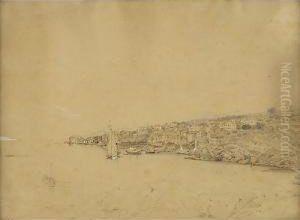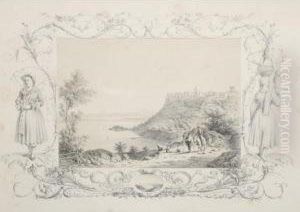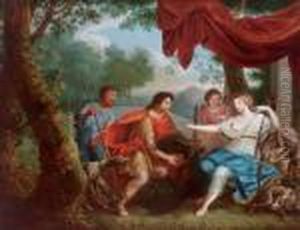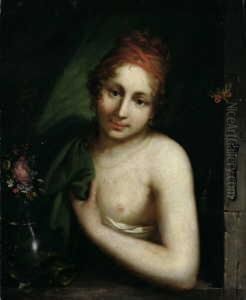August Tischbein Paintings
Johann Heinrich Wilhelm Tischbein, often referred to as 'August Tischbein', was a prominent German painter from the Tischbein family of artists. He was born on February 15, 1750, in Haina, Germany. He is part of a notable family tree of painters, and his uncle, Johann Heinrich Tischbein (called the Elder), was particularly influential in his early life, helping to cultivate his nephew's artistic talent.
Tischbein initially received training from his father, Johann Conrad Tischbein, before moving on to study under his uncle in Kassel. He further honed his skills at the Academy of Arts in Kassel and later in Hamburg. His early work was influenced by the Rococo style, which was prevalent during his youth, but as he matured, his style shifted towards Classicism, reflecting the changing tastes of the period.
Throughout his career, Tischbein became well known for his portraits. In 1779, he traveled to the Netherlands and France to study the Old Masters, which had a profound impact on his painting style. His journey continued to Italy, where he stayed for a significant period, and was influenced by the works of classical antiquity and the Italian Renaissance. It was during his stay in Italy that he became acquainted with the famous German writer and statesman Johann Wolfgang von Goethe, and in 1787, he painted the iconic portrait of Goethe in the Roman Campagna, which has become one of his most recognized works.
Tischbein's ability to capture the personality and essence of his sitters in his portraits made him a sought-after portraitist among the European nobility. He was appointed director of the Academy of Arts in Naples in 1789, where he continued to work and teach until the turn of the century. In the later years of his life, Tischbein returned to Germany and continued to paint until his death on June 22, 1812, in Eutin. His legacy is preserved in numerous collections throughout Europe, showcasing the elegance and refinement of late 18th-century portraiture.



